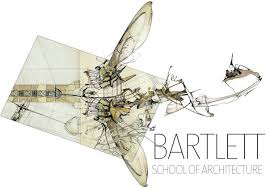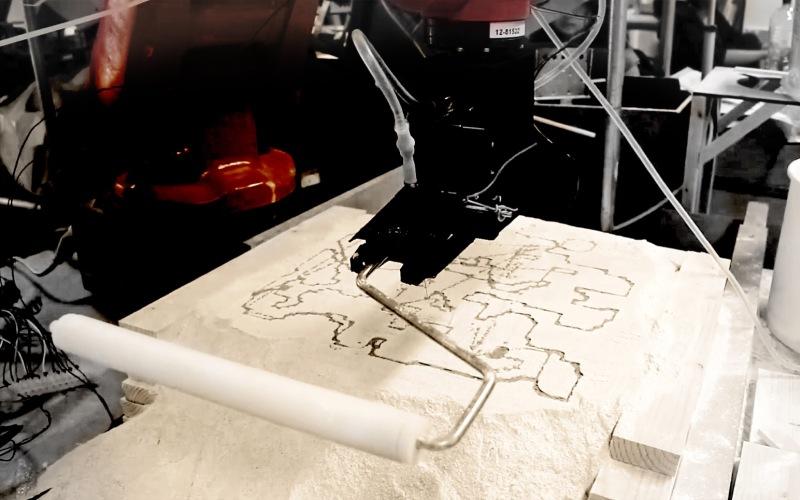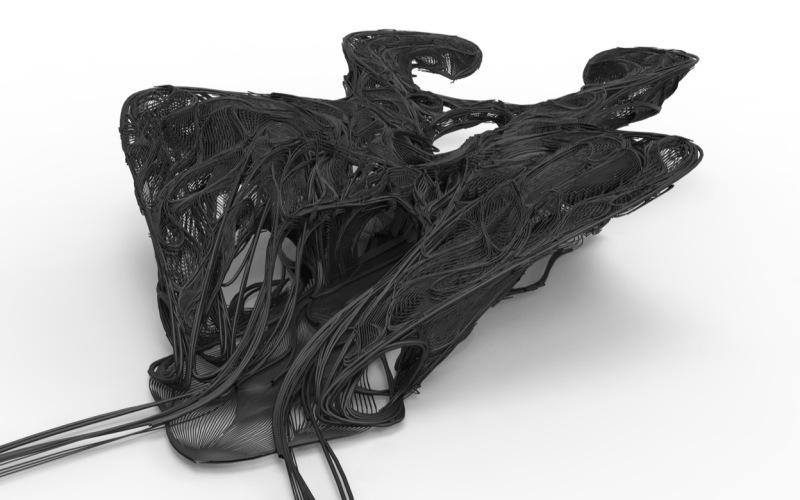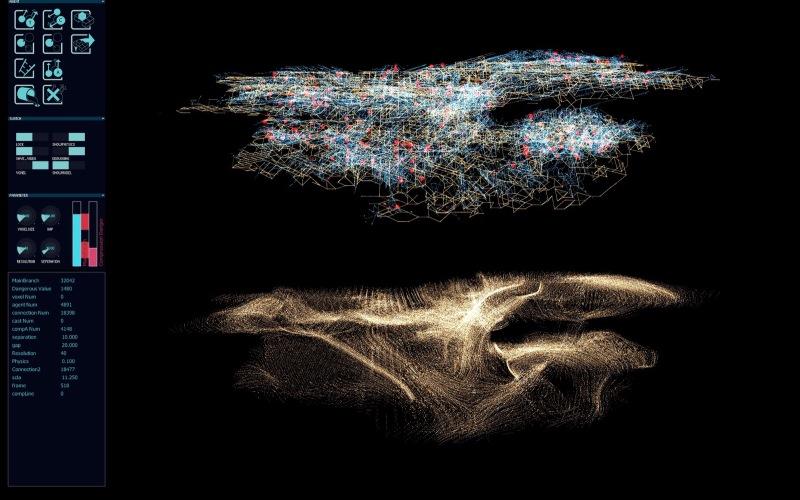Students Break Architectural Design Barriers Using 3D Printing Robots at Bartlett School of Architecture’s RC4
 In London, Bartlett School of Architecture’s RC4 offers masters-level courses, and is composed of a research cluster which is taking on the challenges of architectural design in 3D printing through the use of 3D printing industrial robots. Their goal is to turn these design challenges into opportunities — and to incorporate them into their designs.
In London, Bartlett School of Architecture’s RC4 offers masters-level courses, and is composed of a research cluster which is taking on the challenges of architectural design in 3D printing through the use of 3D printing industrial robots. Their goal is to turn these design challenges into opportunities — and to incorporate them into their designs.
While fine-tuned design and intricate detail lie at the center of much architecture, that often presents a challenge in digital design and fabrication. While it seems practically anything could be replicated today through the use of 3D printing, architecture is not always so readily cooperative. What was historically done through hands-on craftsmanship is still not so easily replicated by the machines we employ as tools to create and produce our designs.
For optimal efficiency and use of the 3D printing robots, the researchers at RC4 used a very direct computational approach by cutting out a number of steps such as employing mesh, contouring, or slicing — and getting straight to the matter of applying material. The models are designed specifically to organize the materials in space, depending on structure and logistics.
Student teams not only came up with unique projects but constructed their own robotic tools for the large-scale 3D printing projects, opening up the world of robotics and how they apply to 3D printing and design. The students worked in areas of:
- Vectoral plastic extrusion
- 3D printed sandstone
- Ceramics
- Clay
- Concrete
Research and design team Filamentrics (Zeeshan Ahmed, Justin Yichao Chen, Nan Jiang,Yiwei Wang) produced a design called SpaceWires. In an effort to break away from limitations of space and the traditional use of framing, they used robotic plastic extrusion to create large structures with fine detail. Due to the streamlined technology of the robot, they were able to break conventional rules by using a recursive plastic extrusion that allowed the robot to produce continuous material, and for it to solidify while in the air.
Team Microstrata (Maho Akita, Fame Ornruja Boonyasit, Syazwan Rusdi, Wonil Son) created Pixelstone, and chose to experiment with the powder-based sandstone to represent ideas for building with reinforced concrete in construction. Using a layer-based network of compression and tension, channels were left empty within the structure, and cast with aluminum for further tension and strength.
With the architectural research, design, production, and structures, the student teams broke all barriers with creating their own tools to take on significant challenges, and to build structures that would appear to defy space and gravity.
Discuss these unique structural designs with us in the Students Break Architectural Barriers forum at 3DPB.com.

Check out a video of team Microstrata’s project process:
Subscribe to Our Email Newsletter
Stay up-to-date on all the latest news from the 3D printing industry and receive information and offers from third party vendors.
You May Also Like
IperionX Inks 10-Year Deal with Wisconsin Manufacturer for 80 Metric Tons of Titanium Per Year
IperionX, the Charlotte-based supplier of sustainable titanium powders used for additive manufacturing (AM) and metal injection molding (MIM), has signed a ten-year deal with United Stars, a group of industrial...
Gastronology Launches Industrial Production of 3D Printed Food for Dysphagia Patients
Food 3D printing has, in many ways, been an additive manufacturing (AM) segment looking for the right business case. While some applications are beautiful and others may or may not...
Lockheed Martin Leads $3M Investment in Q5D’s Electronics 3D Printing System
Q5D, an original equipment manufacturer (OEM) of robotic arm, hybrid additive manufacturing (AM) systems used for wire harness production, has closed a $3 million investment round. The investment arm of...
3D Printing News Briefs, April 6, 2024: Depowdering, Cybertruck Door Handles, & More
In today’s 3D Printing News Briefs, ioTech’s digital manufacturing CLAD technology is opening up opportunities for microelectronics and additive manufacturing. Hexagon and Raytheon Technologies commercially released the Simufact Additive Process...


































